
 Department of Conservation and Recreation
Department of Conservation and Recreation
Conserve. Protect. Enjoy.
 Department of Conservation and Recreation
Department of Conservation and Recreation
By Julie BuchananPosted December 02, 2021
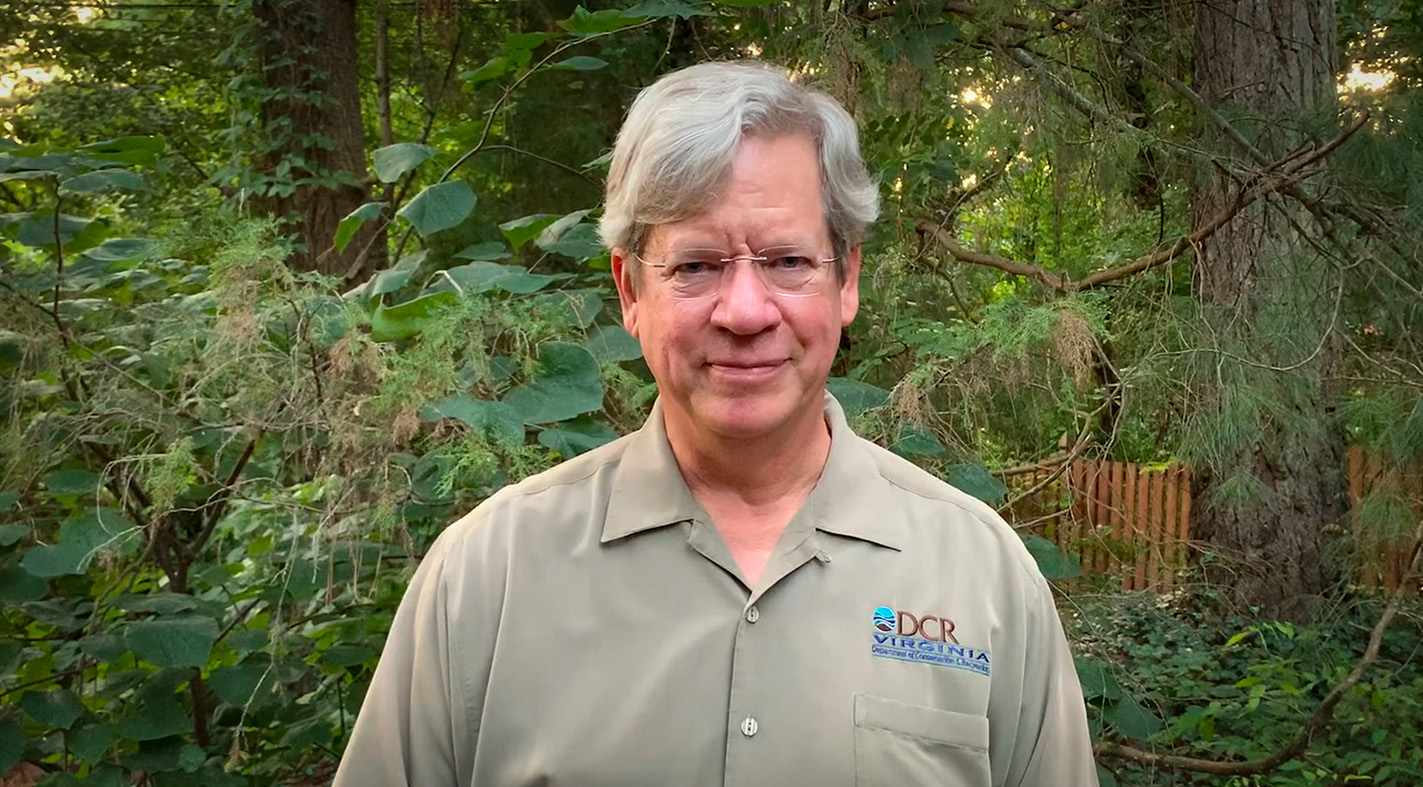
Tom Smith, Deputy Director of Operations for the Department of Conservation & Recreation (DCR)
Tom Smith grew up on a small farm in McAlisterville, Pennsylvania, which included all the fun jobs with that lifestyle, including farm work, a summer at an Amish sawmill/pallet factory and an unforgettable period as a commercial chicken catcher. He holds a B.S. in environmental biology from Juniata College and an M.S. in physiological plant ecology from Vanderbilt University. Smith has worked as a field ecologist for the Tennessee Natural Heritage Program and as director and vegetation ecologist for the Pennsylvania Natural Heritage Program of The Nature Conservancy (TNC). He came to DCR in 1990, where he served as director of the Virginia Natural Heritage Program for 25 years, before his role as Deputy Director of Operations. He is retiring as of Jan. 1, 2022.
I grew up in the beautiful, rural Ridge and Valley Province of central Pennsylvania. My grandmother, Mildred Sheerer, loved the forest and native plants, and we’d often go collecting to build terrariums. My mother Isobel collected plants to press for her framed art pieces, including everyone’s wedding announcements. I fell in love with natural history courses when I found them at Juniata College, and one of my advisors in graduate school, Dr. Robert Kral, and my major professor, Dr. Bill Eickmeier, opened my eyes to plant taxonomy, vegetation ecology and the Cedar Glades of the Nashville Basin. Thanks to my training, I stumbled into The Nature Conservancy and the Tennessee Natural Heritage Program from graduate school and a career beyond belief.
Actually, Larry Smith, retired DCR Natural Areas Protection Manager, was my boss and friend in Nashville. He had moved to Ohio and called me in 1982 to ask if I saw the two positions open at Virginia Natural Heritage. Both closed the next day! I always loved exploring Virginia as I passed through — I knew of the great groundwork and efforts underway by Michael Lipford and team here at Virginia Heritage, and the rich biodiversity found here from my collaborative work with the Virginia team while I was with Pennsylvania Heritage. So, I faxed my application in hours before the deadline. Within a short time, both Larry and I found ourselves sharing an office in the Zinke Building.
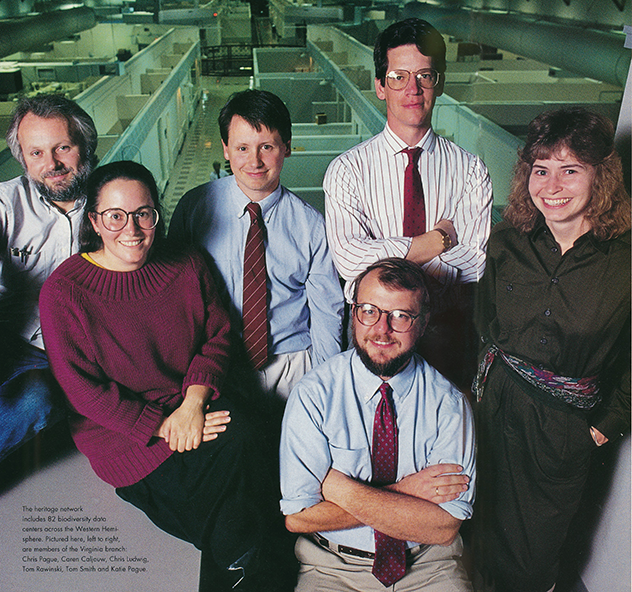 DCR Natural Heritage team featured in The Nature Conservancy magazine issue of January/February 1992 (left to right): Chris Pague, Caren Caljouw, Chris Ludwig, Tom Rawinski, Tom Smith and Katie Pague.
DCR Natural Heritage team featured in The Nature Conservancy magazine issue of January/February 1992 (left to right): Chris Pague, Caren Caljouw, Chris Ludwig, Tom Rawinski, Tom Smith and Katie Pague.
The program was the 46th in the nation to be started by The Nature Conservancy (despite Virginia being the location of TNC’s home office — that is another story). We had zero natural area preserves when I arrived in 1990, and Larry Smith and I were staff numbers 10 and 11. It was 1990, so no one used the term teleworking, but several folks shared a desk, we’d outgrown our office, so they’d have a schedule with their deskmate to determine who’d be working from home or schedule to be in the field. It was a very exciting time of discovery as so much of the state had been understudied, and we had the data collection and management methods honed by TNC and the other 45 natural heritage programs and some of the brightest natural history field biologists in the country. We only had one natural area steward and were adding new natural area preserves quickly. Thankfully, Rick Myers joined the team in 1998 and built a wonderful team of stewards to manage the rapidly growing system.
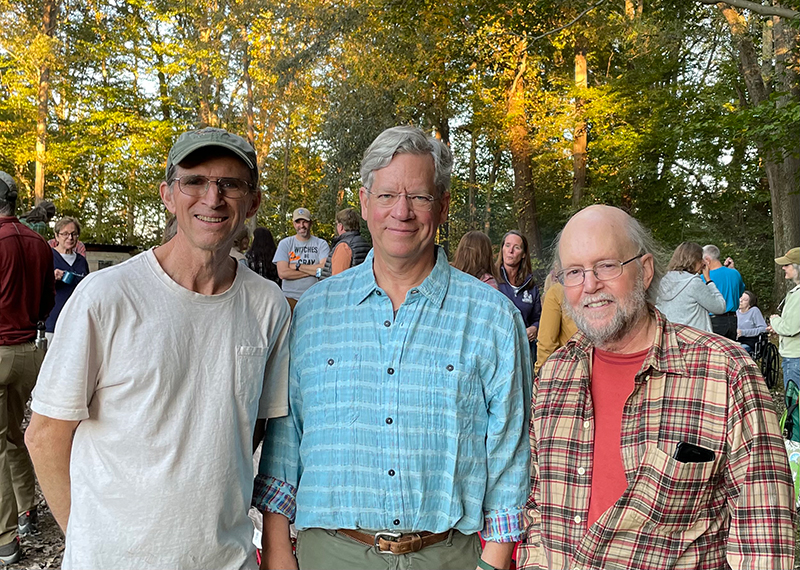
DCR Natural Heritage employees left to right: Irv Wilson, Tom Smith and Gary P. Fleming. Photo by Lynn Wilson.
Wow, tough question. What comes to mind first: Finding and establishing a TNC Preserve in my hometown. Being a part of building the best Natural Heritage Program in the network. Helping to envision and build Machicomoco State Park.... But perhaps the one that still astounds me the most is the protection of the 54th of 66 Natural Area Preserves, Crow’s Nest Natural Area Preserve. In 2008 and 2009, we purchased 2,872 acres for $34.1 million. Before 2008 and even sometimes today, I never would have believed we’d be able to succeed in such an effort. Thanks to great partners including Stafford County, Department of Environmental Quality, The Nature Conservancy, Northern Virginia Conservation Trust and the Army Corps of Engineers, Crow’s Nest’s five exemplary natural communities and multiple rare plants and animals are conserved in perpetuity and open and available for all people to experience.
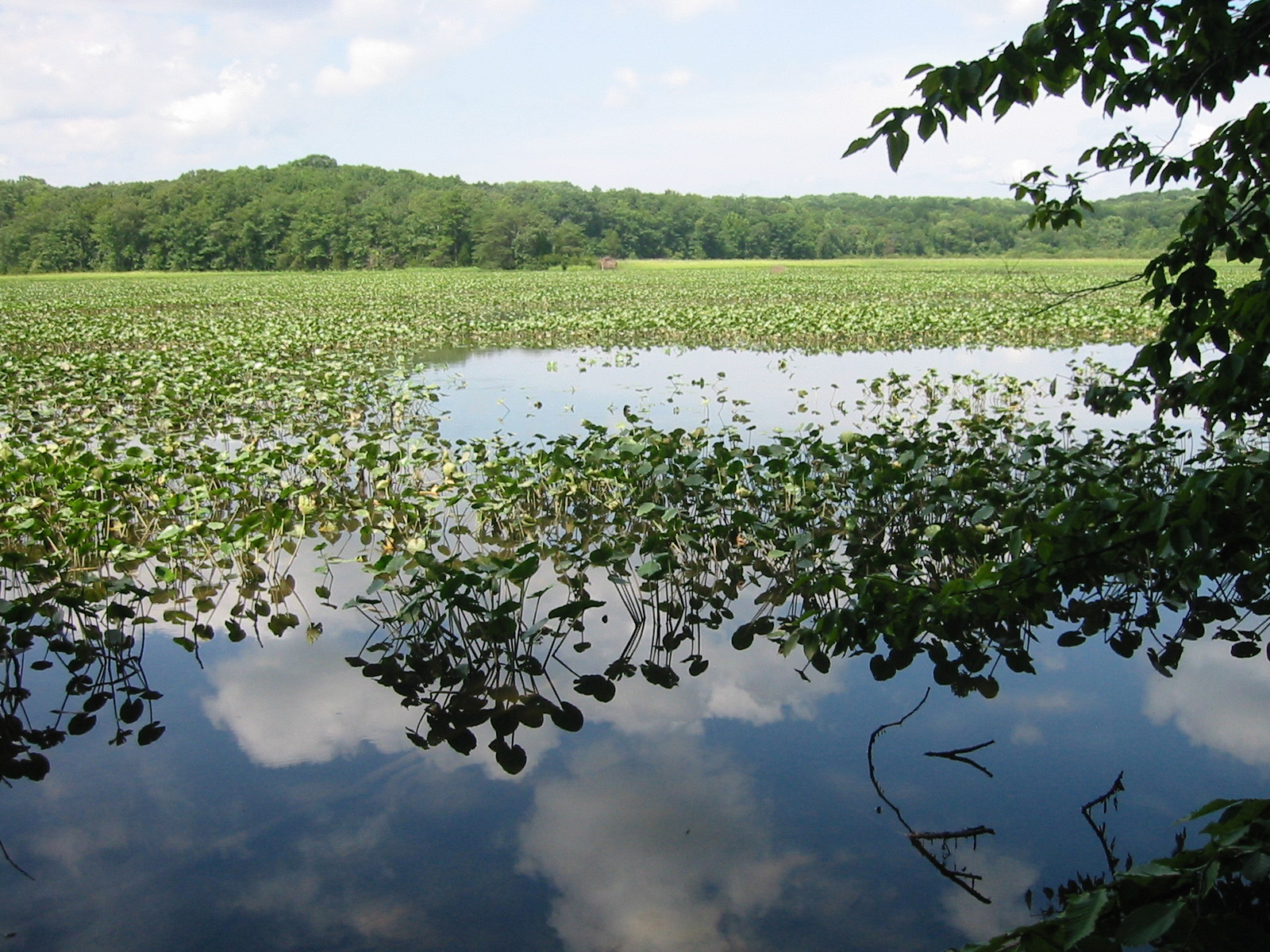
Crow's Nest Natural Area Preserve
Oddly, I’ve been blessed to have had some great “Bobs” impact my career path. My high school biology teacher, Bob King; my Juniata College ecology professor, Bob Fisher, who opened my eyes that I could study and pursue my natural history passion – to what end I had no idea beyond being a professor; Bob Kral, plant taxonomist at Vanderbilt University who showed me the path to a lifelong pursuit of learning and appreciating plant species; and Bob Jenkins who created natural heritage programs, taught me to keep my focus on what is important and provided me and thousands of others an opportunity for a public service conservation career I never could have imagined.
Impossible question among so many wonderful species native to Virginia. I’ve always loved and respected plants that make a living in the harshest of habitats. Piedmont fameflower (Phemeranthus piedmontanus), a newly described species, thanks in large part to my good friend, Chris Ludwig, is known from just two counties in Virginia and North Carolina. It grows on exposed mafic and ultramafic rock outcrops, some of the hottest, driest, most exposed habitats in Virginia, and produces an attractive pink flower only opening in the early afternoon.
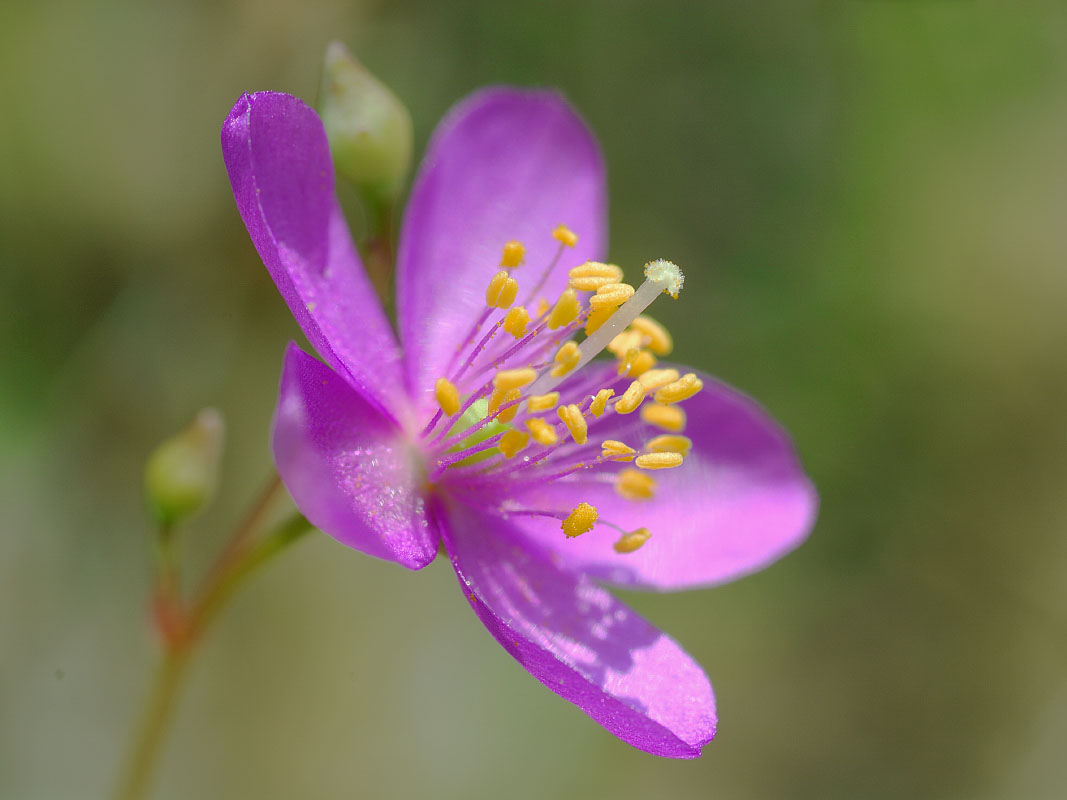
Piedmont fameflower (Phemeranthus piedmontanus). Photo by Gary P. Fleming.
Sadly, we are constantly being inundated with destructive new invasive species coming from garden centers to shipping containers. They take over the ground layer of our forests, kill our native trees, and invade our waters. Please talk to your local garden center to make them aware of the dangers they may be helping to spread.
Work hard to learn your trade and hone your skills, do not be guided by traditional thinking and follow your passion. Your Virginia Natural Heritage Program was invented by Dr. Robert “Bob” Jenkins, the first Science Director of The Nature Conservancy. In the early 1970s, Bob saw that conservation was not driven by data but by knee-jerk reactions to development and how “neat” a site seemed. He devised a simple and elegant methodology to catalogue natural biological features (species and ecosystems) so that proactive conservation could occur. He marched across the U.S. establishing Natural Heritage programs in all 50 states and now all Canadian provinces and territories and several Central and South American countries. Today they are coordinated by NatureServe.
It can be difficult to hold on to hope, but excellent, young, smart conservationists are coming into the field every day. They bring a passion to learn and explore. Land conservation groups are paying more attention to protecting and stewarding natural habitats, not just “preventing development.” More people are getting themselves and their children outdoors and exploring our natural world. Climate change is the single greatest threat to our natural world and the systems we humans depend upon to sustain our society. People finally seem to be paying attention.
A camping trip to New Mexico is coming in late December, a few months of catching up and quiet reflection, playtime and hikes with my new grandson, more time with our children Danny, Ian, Olivia, Emma and Emily and their significant others, some international travel with my wife Joyce, and finding a conservation project I might be of service to.
Categories
Conservation | Land Conservation | Natural Heritage
Tags
invasive plants | native plants | natural area preserves

